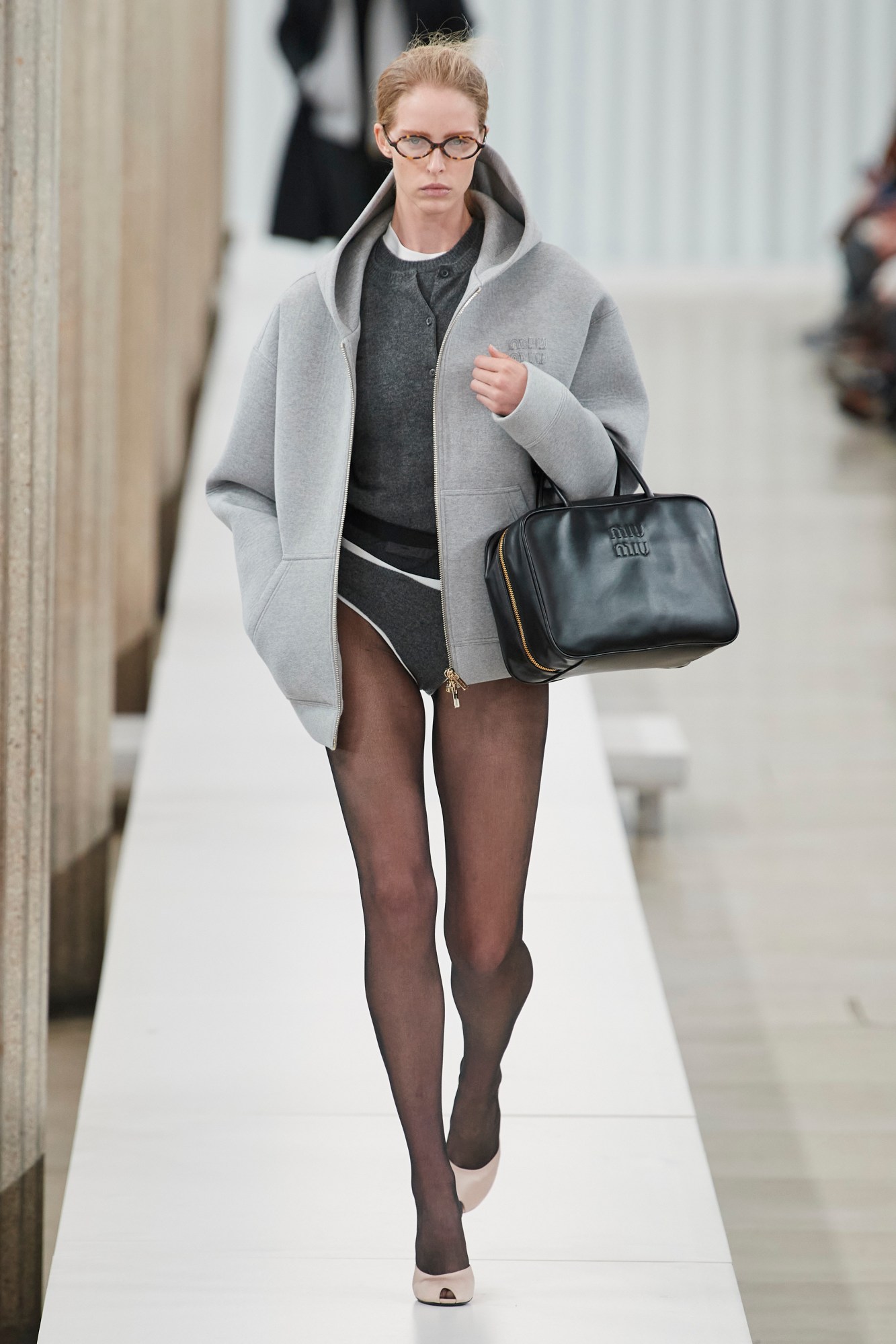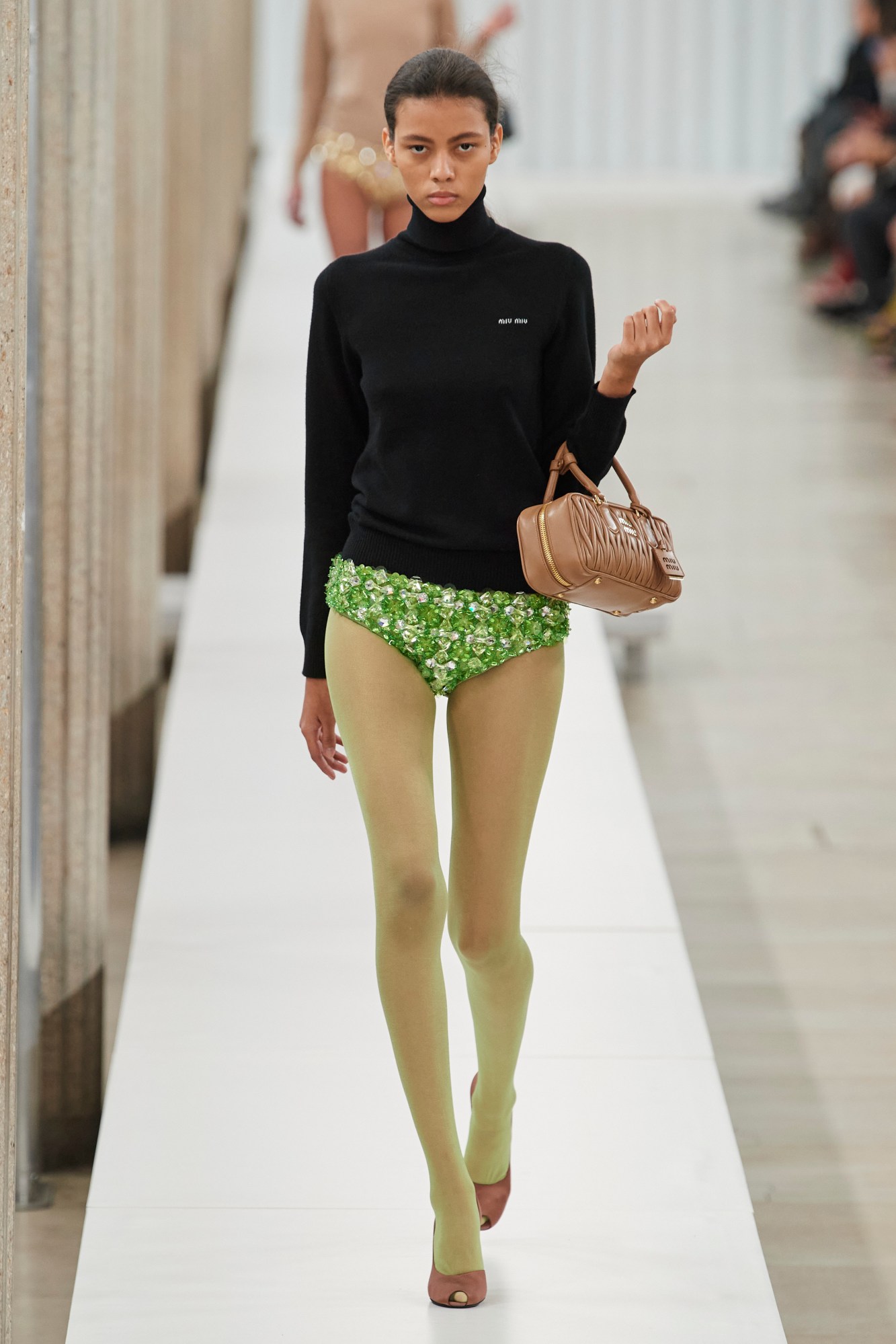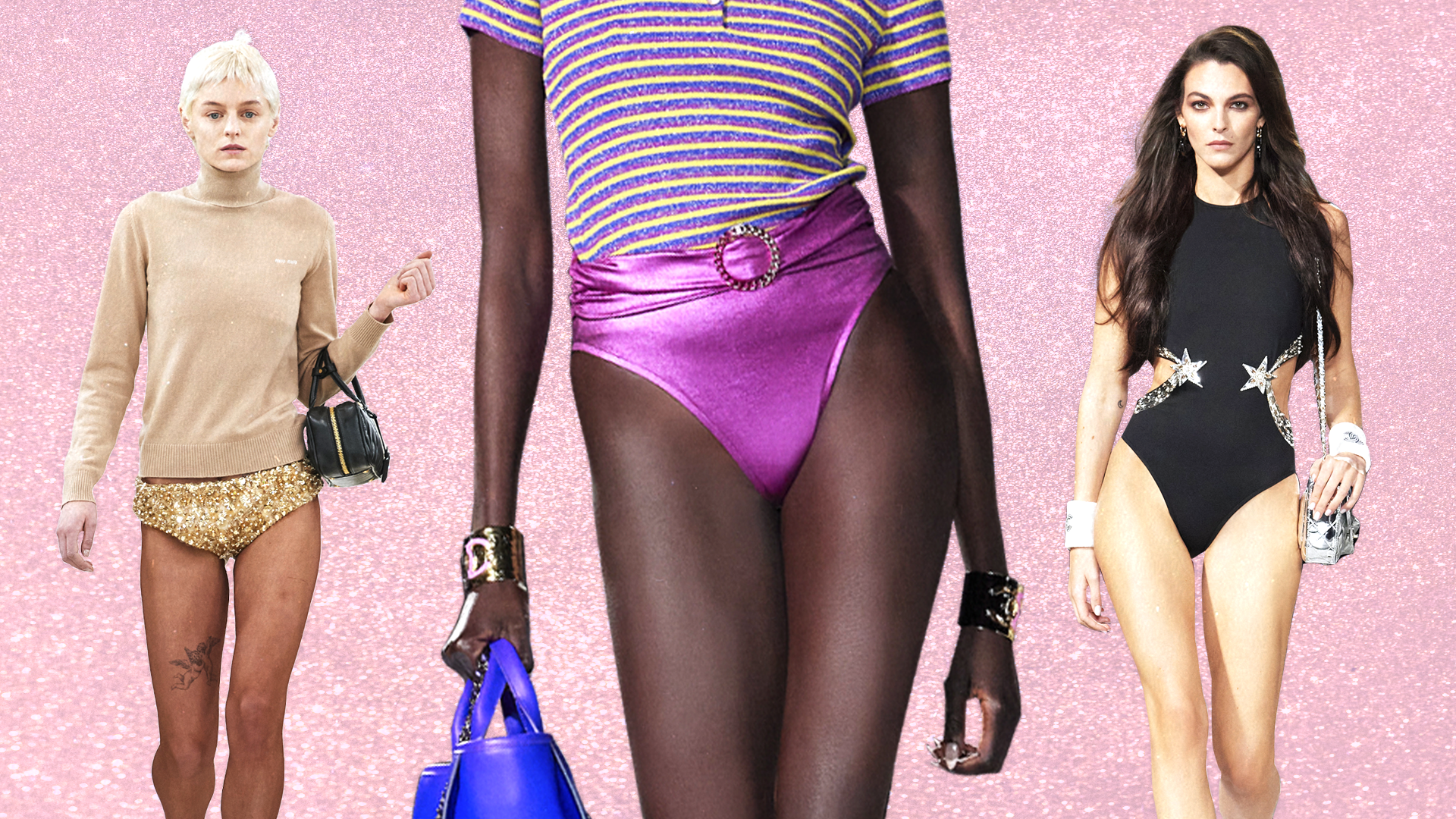Since the viral mini skirt-crop top set that had both chins and bums wagging in early 2022, Miuccia Prada seems to have been hemming and hawing with each season that’s followed over the appropriate length of skirting and shirting for today’s Miu Miu wearer—that is, until AW23, when bottoms, for the most part, disappeared. For her latest collection, Mrs Prada sent down the runway a parade of what appeared to be the bare, albeit elegant, necessities to “dress for thinking,” as she methodically called this season’s looks. Cardigans were tucked into tights, boy-cut briefs were layered over sheer leggings, and Emma Corrin’s bejewelled gold panties were the show-stopping finale. “I love it! If I were younger, I’d go out in panties!” declared a bemused Mrs Prada after the show.
Mrs Prada isn’t the only one to have done away with bottoms in recent times — earlier this year Kendall Jenner sent the TikTok tag #tightsaspants viral as she hit the pavement in a bare-bottomed look taken straight from Mathieu Blazy’s Bottega Veneta SS23 runway show. Wearing sheer tights over black briefs and a navy-blue cashmere sweater, it was impossible to ignore the references to the bottomless doyenne of the dance floor, Edie Sedgwick. Of her signature briefs-over-tights look, Andy Warhol’s muse once explained to The New York Times in 1965, that “it was never with the intention of being clever, but because it’s easy.”

“Easy” as it may have been for Sedgwick, before the 1960s the idea of going ‘bottomless’ was as inconceivable as it was immoral: women were strapped into hosiery with garters and girdles, a sight for their husband’s eyes only. But in 1959, after watching his pregnant wife struggle to fasten her garter over her belly, a Mr. Allen E. Grant invented the “Panti-Legs,” seamless, waist-high pantyhose — and with it, he started a revolution. As hosiery, and women’s legs, were now freed from unsightly fasteners, designers like Mary Quant, the pioneer of Mod fashion, shortened hems to create ‘mini skirts’ and sent wonderfully coloured #tightsaspants down the runway. With this mobility came a sense of freedom and, although certain commentators scathingly referred to this new bottomless look as ‘fugitives who look like they’ve escaped kindergarten,’ a new space of womanhood was carved out between childhood and married life.
Of her wearers, Quant said “they are curiously feminine, but their femininity lies in their attitude. She enjoys being noticed, but wittily. She is lively, positive, opiniated.” Such words could also ring true some 60 years later of the frazzled hair Miu Miu models who strutted confidently down the white runway of the Palais d’Iéna earlier this year; Mrs Prada has never designed for bodies but for brains.

By the 1990s, bottomless dressing had reached its bare minimum: Karl Lagerfeld sent sequined swimwear down the runway for Chanel (impractical for swimming but perfect for swanning up the Met Ball stairs à la Kendall Jenner last Monday, with the look recurring in Virginie Viard’s Hollywood extravaganza last week) while Tom Ford infamously clad models in no more than a G-string for his AW96 Collection. But not everyone appreciated this cheekiness: in response to seeing hints of Cindy Crawford’s bottom in Todd Oldham’s 1994 Spring show, a Chicago Times article entitled A-HEM! concluded that the only rational explanation for this runway trend was that “if the American man is sitting there, as dazed as I was, he probably won’t be quite so obstreperous about footing the bill.”
With their bags balanced overarm and keys clutched fiercely in hand, the Miu Miu wearer is most certainly not forgetting their bottoms in the hopes of finding someone to pay their bills. Nor are they still stuck in Zoom meetings, too lazy to put on their bottom-halves in a post-pandemic era. The streamlined bottomless silhouettes felt more like a defiant reclamation of liberty in the face of a world that is constantly threatening to repeal hard-fought freedoms such access to abortion and birth control. As Mrs Prada said post-show “Maybe I’m too careful about what’s happening around us, but I can’t leave fashion like some place of nonsense.”
But as she also once mused about dressing up, “It’s fun—it’s wonderful. But it’s something to keep you busy for ten minutes in the morning. Then you still have to face the rest of the day.” And perhaps, without the need to put on trousers, she was giving us all a couple of extra minutes to have fun, and for just a moment, forget our endless battle to protect our fundamental human rights.

